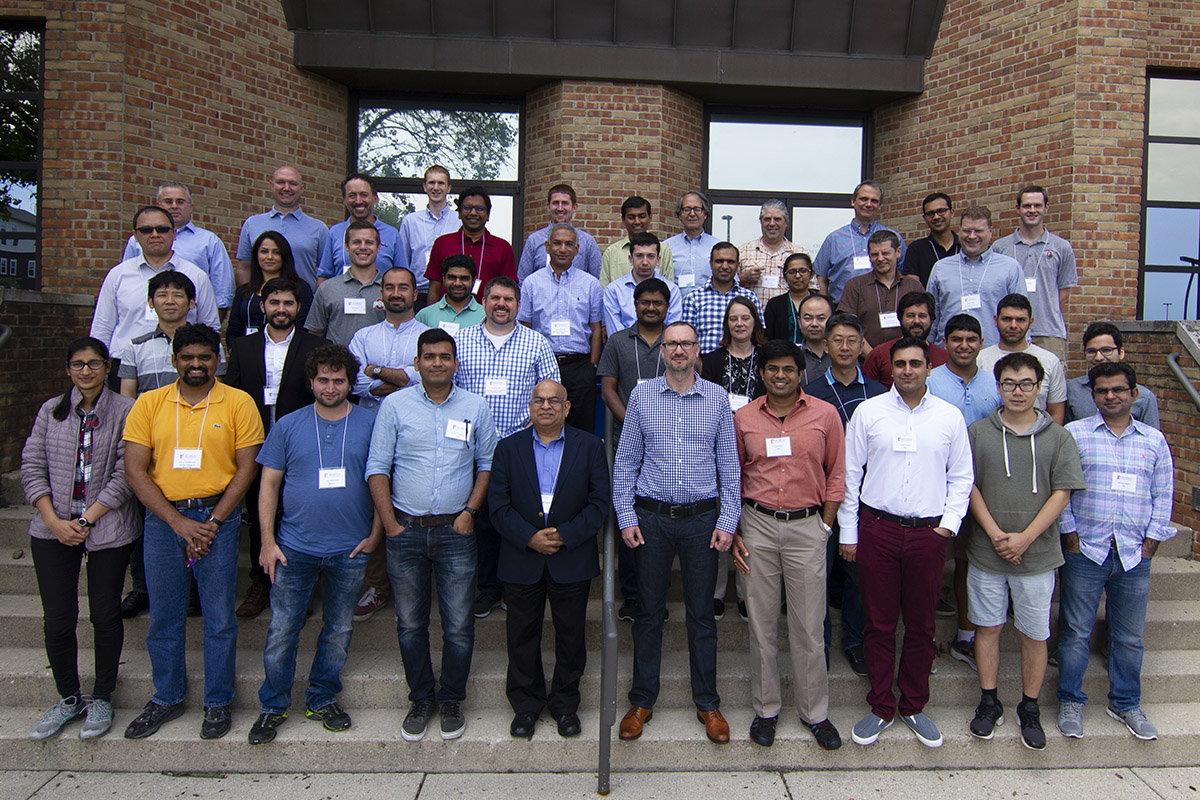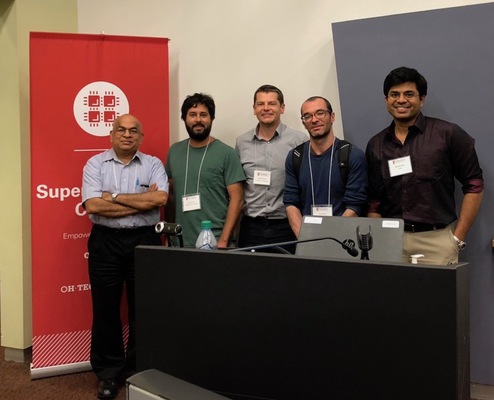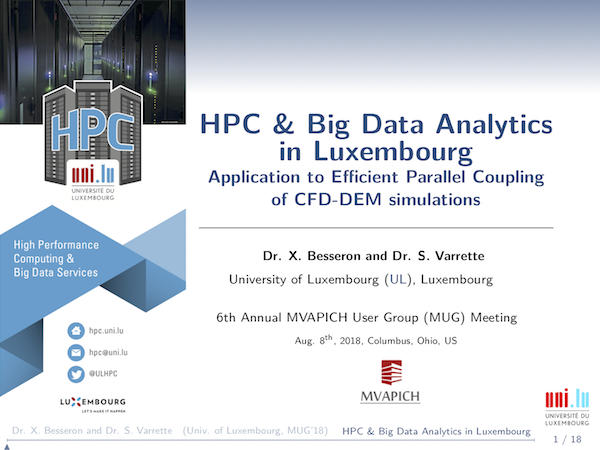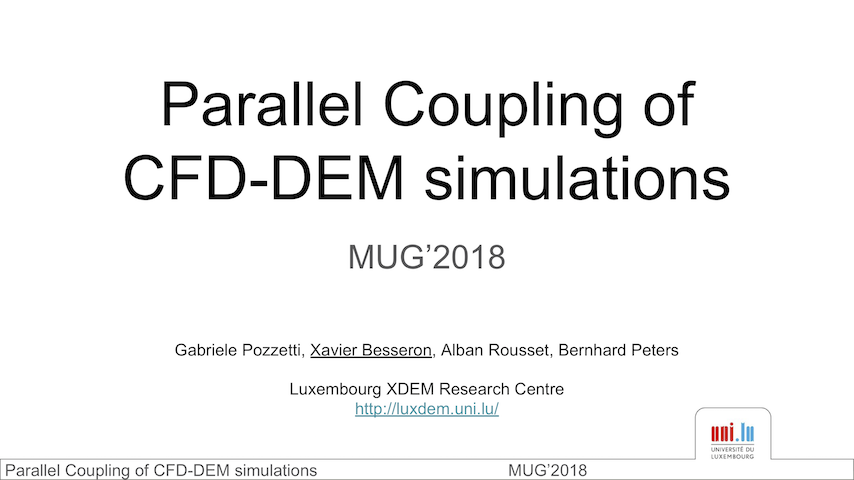Invited Speakers @ MUG'18
The 6th MVAPICH User Group (MUG’18) Meeting was help in Columbus (Ohio), from August 6th to 8th, 2018.
Together with Xavier Besseron, and after many years of attempts, we were finally able to honour the invitation from Prof. Dhabaleswar (D. K.) Panda to attend as invited speaker this excellent event.
It was an excellent and intense week (see the detailed program), and on our side we made a joint presentation divided in two parts:
- a (brief) review of High Performance Computing and Big Data analytics in Luxembourg: Overview and Challenges in the EuroHPC horizon
- a more technical presentation illustrating an Efficient Parallel Coupling of CFD-DEM simulations, performed on top of the UL HPC platform by the LuxDem team.
Here is the official group picture taken during the event.

Thanks again to the MVAPICH team (DK, Hari, Mark, Jeff etc.) for the successful and professional organisation of this event, while taking care of us so nicely during our stay.
The slides we prepared for that event are provided below.
High Performance Computing and Big Data analytics in Luxembourg: Overview and Challenges in the EuroHPC horizon
Abstract: Accelerating modelling and simulation in the data deluge era requires the appropriate hardware and infrastructure at scale. The University of Luxembourg is active since 2007 to develop its own infrastructure and expertise in the HPC and BD domains. The current state of developments will be briefly reviewed in the context of the national and European HPC strategy in which Luxembourg is starting to play a role.
Efficient Parallel Coupling of CFD-DEM simulations
Abstract: Eulerian-Lagrangian couplings are nowadays widely used to address engineering and technical problems. In particular, CFD-DEM couplings have been successfully applied to study several configurations ranging from mechanical, to chemical and environmental engineering. However, such simulations are normally very computationally intensive, and the execution time represents a major issue for the applicability of this numerical approach to complex scenarios. With this work, we introduce a novel coupling approach aiming at improving the performance of the parallel CFD-DEM simulations. This strategy relies on two points. First, we propose a new partition-collocation strategy for the parallel execution of CFD–DEM couplings, which can considerably reduce the amount of inter-process communication between the CFD and DEM parts. However, this strategy imposes some alignment constraints on the CFD mesh. Secondly, we adopt a dual-grid multiscale scheme for the CFD-DEM coupling, that is known to offer better numerical properties, and that allows us to obtain more flexibility on the domain partitioning overcoming the alignment constraints. We assess the correctness and performance of our approach on elementary benchmarks and at a large scale with a realistic test-case. The results show a significant performance improvement compared to other state-of-art CFD-DEM couplings presented in the literature.



